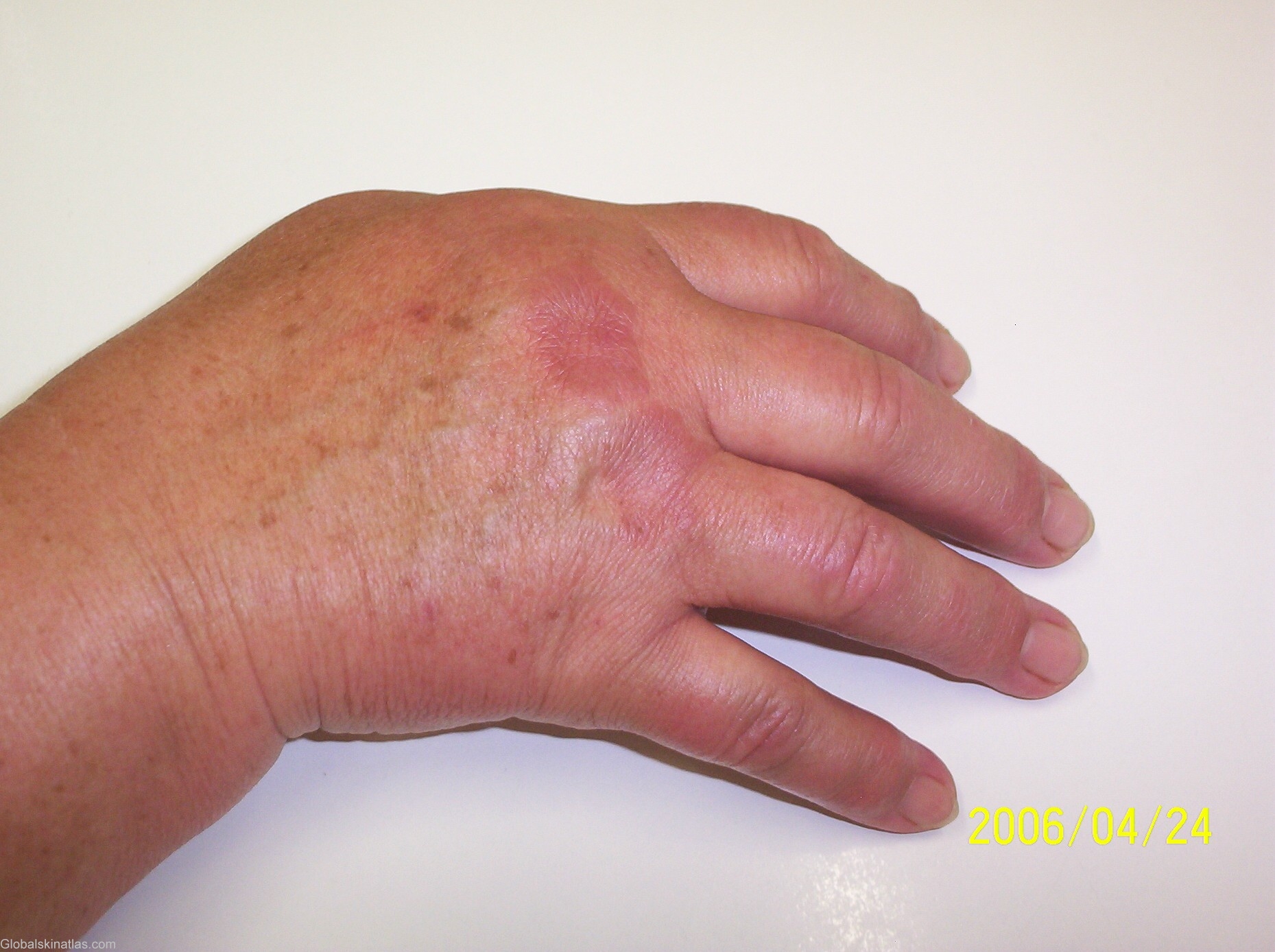

Diagnosis: Granuloma annulare
Description: Coin-sized flesh to red colored plaques with central involution.
Morphology: Plaque
Site: Hand,dorsum
Sex: F
Age: 49
Type: Clinical
Submitted By: Mehravaran Mehrdad
Differential DiagnosisHistory: Granuloma Annulare (GA) is an inflammatory condition of unknown cause characterized clinically by dermal papules and plaques and histologically by areas of degenerative collagen with granulomatous inflammation in the dermis. Localized GA was first recognized by Fox in 1895, it usually begins on the lateral and dorsal surfaces of the fingers and hands (as in this case), wrists, ankles, and flesh colored to red, flat-topped papules, which slowly spreads preipherally, at the same time undergo central involution, so that roughly annular lesions are found. The lesions never ulcerate and on disapperaring leave no trace. Typically children and young adults are affected. Two thrid of patients are younger than 30 years old. Spontaneous resolution occurs within 2 years in 50% of the affected, altough duration may be weeks to decades, and recurrent eruptions occur in 40%. Females (as in this case) are affected twice as often as males. Management. Potent topical corticosteroids, used alone or under occlusion, and intralesional corticoteroid (triamcinolone acetonide, 10mg/mL) are frequently successful treatments. Cryotherapy is often used but may frequently result in hyperpigmentation or hypopigmentation. In thin-skinned areas such as the neck, tacrolimus ointment 0.1% may be applied twice daily. Evaluation to rule out DM and autoimmune thyroiditis are necessary.